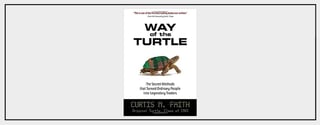 Don't have time to read, click play above or subscribe to our podcast on itunes.
Don't have time to read, click play above or subscribe to our podcast on itunes.
As a recap, part one was quantify: breaking old and new grain into marketable units. Part two was planning out sales and delivery through logistics. Part three was all about the various tools farmers have to manage price risks.
This last topic is the most challenging and technical part of the grain marketing plan: producing price targets. That is, trying to figure out what’s a good price and when you should sell.
The futures market is tricky; there are a lot of moving parts. If I could predict the futures market, I’d be living on a private island. Too bad...
However, there’s plenty you can understand about the futures. Let’s get into it.
Rule #1: Educate yourself!
Read books. The right books can transform your understanding of futures.
(Note: At the end of this post, I’ll list my top three books you need to check out.)
For now, here’s a little free education. When you’re analyzing the futures market, there are two main points:
1) Technical Analysis
Technical analysis has to do with price: charts, momentum, points of resistance, points of support… You’re using Fibonacci retracements and other very, very technical figures.
Technical analysis basically tells you the personality of the market. For example, $4 for corn is a very round number, so it may be that as we push against $4 corn, we may hit it, bounce off, hit it, bounce off. It becomes a point of resistance.
Then finally one day we’ll close above it; we’ll go to $4.10, back down to $4, up to $4.10, down to $4, bouncing on the other side of the number. It becomes a point of support.
Technical analysis is more important for the traders, farmers should understand when a rally is exhausting itself. For example, technical analysis would have put you in a very good position in a rally that happened in July of 2015, which was the best time to market grain in 2015. We had a technical exhaustion of the rally, and unless you understood technical analysis, you didn’t realize that the market was running out of steam and that you needed start making sales.

They say the markets take the staircase up and the elevator down. But in July, the market took the elevator up, hung out, then took the elevator right back down. Many people made a few sales, but they didn’t realize they needed to make all their sales at the time.
2) Fundamental Analysis
Fundamental analysis is supply and demand. There are constant USDA reports coming out on the growing conditions in the different states. They tell you about what’s happening in regard to the crop. That’s the supply side.
The demand side is our usage; such as exports, how much corn is getting distilled, how many soybeans are getting crushed into oil, etc.
If the crush numbers are disappointing, you’ll see the price drop. Also, if Brazil has a huge crop, they’re going to flood the exports market, dropping the price of soybeans.

It’s very complicated; again, there are so many moving parts. Working farmers don’t have time to follow what’s going on in Brazil and Ukraine and Russia and Germany. It’s impossible to follow the markets and be a successful farmer. Yet, farmers need to do both.
What should you do? The answer is that no matter how lucky you’ve gotten in the past, you need help. The most successful farmers have really good advisory partners.
If you take nothing else from this article, take that. If you want to improve your grain marketing, start hiring an advisor. I recommend that you hire two advisors so you get two opinions. Whichever one you agree with more, you can execute their trades.
They’re going to do better for you than you’ll do for yourself, because they’re in the markets all day. You don’t do your taxes yourself; you hire an accountant. This is no difference.
Jim Rogers, one of the most famous market wizards of all time, said, "Markets often rise higher than you think is possible and fall lower than you can possibly imagine."
You need help to handle something as volatile as that.
Speculation
When you’re making your trades, be careful to avoid becoming a speculator instead of a hedger. I’m guilty of this. It’s just not wise, though. Don’t mistake luck for talent. Just because you had one great trade doesn’t mean it will ever happen again. Even Warren Buffett says he will likely not be able to perform as was as he has in the past.
To play the market intelligently, every good trade must have two basic characteristics:
1) A good buying price
2) A good selling price
Just like buying a house for an investment, you want to buy at the lowest possible price and sell at the highest possible price. It takes a good buy and a good sale in order to make money.
Few people can execute both of those successfully in the futures market.
Careful on speculation. You don’t want to lose the farm because you were overconfident. There are people who spend all day analyzing the futures market and still don’t have it figured out.
Again, an advisor is perfect for helping you nail an entry and exit strategy into the markets. Remember rule #1: educate yourself, through advice and also through books, which leads me to a few recommendations.Top 3 Books for Understanding the Market
Market Wizards - Jack Schwager

Schwager interviews some of the top market speculators, bond traders, futures traders, and currency traders. It’s a fascinating book. Every one of these guys has gone broke at one point, but the key to the book is how they figured out how to manage risk.
The Way of the Turtle - Curtis Faith

Faith was trained by one of the wizards interviewed in Market Wizards. This is an interesting book about the trading style he uses to conquer the markets.
Hot Commodities - Jim Rogers

Rogers was also interviewed in Market Wizards. Jim Rogers is probably the most bullish person on farming in the world. He’s one of the most famous speculators of all time. He’s a farm boy that was able to retire around 33 years old. You’ll learn more by reading Jim Rogers’s books than by getting an MBA.
Conclusion
I don't do anything without the blessing of people smarter than me. Get advice from those who have gone before you about what lies ahead. If my mentors tell me not to do something, no matter how great of an idea I think it is, I don’t do it.
Have a big budget for advisory and books, because the more you learn the more you earn. Crush some books; get in that tractor and listen to books on tape!
If you have any questions about farm financial software or grain marketing please visit CashCowFarmer.com We’re here to help you.





